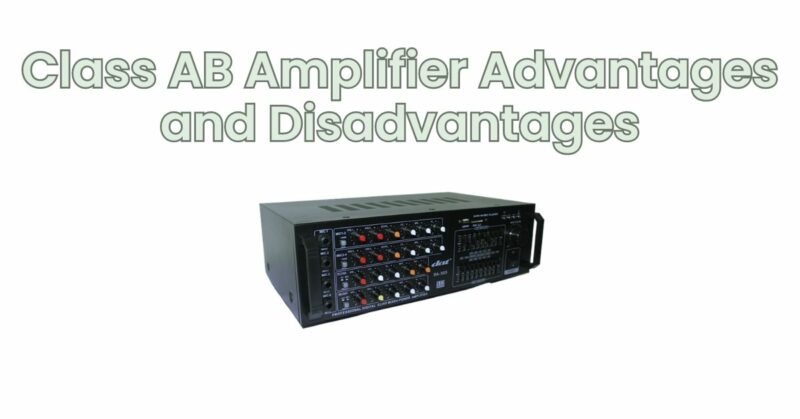Class AB amplifiers are widely used in various audio systems, offering a balance between audio fidelity and efficiency. With their unique design and characteristics, Class AB amplifiers have both advantages and disadvantages that are important to understand. In this article, we will explore the advantages and disadvantages of Class AB amplifiers, helping you make an informed decision when selecting an amplifier for your audio setup.
Advantages of Class AB Amplifiers:
- High Audio Fidelity: Class AB amplifiers are known for their excellent audio fidelity. They provide accurate and detailed sound reproduction, offering low distortion and high-quality audio across the frequency spectrum. This makes them well-suited for critical listening applications where audio accuracy is crucial, such as in home audio systems, studio monitors, and high-fidelity setups.
- Low Crossover Distortion: Class AB amplifiers have a biasing arrangement that helps minimize crossover distortion. This distortion occurs during signal transitions when the amplifier switches from amplifying the positive half of the waveform to the negative half. The biasing arrangement ensures a small amount of current continuously flows through the output transistors, reducing the gap in amplification between signal cycles and resulting in smoother transitions with reduced distortion.
- Efficiency Improvement over Class A Amplifiers: Compared to Class A amplifiers, Class AB amplifiers offer improved efficiency. Class A amplifiers operate in a biased state where a significant amount of power is consumed, even when there is no input signal. Class AB amplifiers minimize this power consumption during idle or low-level listening conditions, making them more power-efficient while still maintaining good audio quality.
- Suitable for Medium to High Power Applications: Class AB amplifiers are capable of delivering medium to high power outputs, making them suitable for applications that require moderate power, such as powering loudspeakers in home theaters, professional audio systems, and live sound reinforcement setups. They provide ample power to drive speakers with dynamic range and handle demanding audio content effectively.
Disadvantages of Class AB Amplifiers:
- Lower Efficiency than Class D Amplifiers: Compared to Class D amplifiers, Class AB amplifiers are less efficient. Class AB amplifiers operate in a linear mode, continuously drawing some power even when there is no input signal. This power dissipation results in increased heat generation and lower overall efficiency compared to the highly efficient switching operation of Class D amplifiers.
- Heat Dissipation Requirements: Due to their linear operation, Class AB amplifiers generate more heat compared to Class D amplifiers. This heat dissipation requires proper heat sink design and cooling mechanisms to ensure optimal performance and prevent overheating. Adequate ventilation and cooling are important considerations when using Class AB amplifiers, especially in setups where they are driven near their maximum power capacity.
- Potentially Larger Size and Weight: Class AB amplifiers may be larger and heavier compared to Class D amplifiers due to their heat sink requirements. The need for effective heat dissipation can result in a physically larger amplifier design, which may pose challenges in installations with limited space or portable audio setups where size and weight are critical factors.
Conclusion: Class AB amplifiers offer a balanced combination of audio fidelity, efficiency, and power output. Their advantages include high audio fidelity, low crossover distortion, improved efficiency compared to Class A amplifiers, and suitability for medium to high power applications. However, they have some disadvantages such as lower efficiency compared to Class D amplifiers, heat dissipation requirements, and potentially larger size and weight. When selecting an amplifier, consider your specific requirements, including audio fidelity, power needs, installation limitations, and cooling considerations. Class AB amplifiers remain a popular choice in many audio systems where a balance between audio quality and power efficiency is desired.


